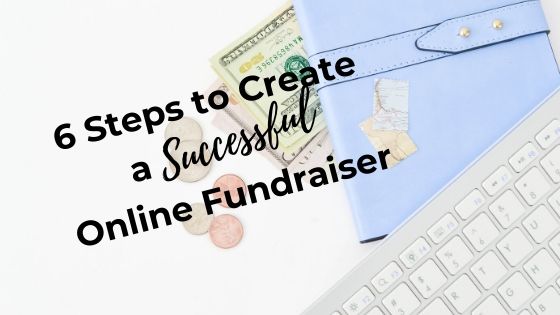With in-person events cancelled, many nonprofits are looking for ways to still raise money because your organization hasn’t stopped helping people. The truth is, you will probably need more as demand increases. You may have changed how you deliver services but you haven’t stopped delivering services. Many of you even know that once we get back to a more normal way of life, you will have even more people to help. It’s overwhelming to think about!
I was in the same position last month. I am a Board member of an organization that helps homeless families. We knew that once our state came out of quarantine that we would have an influx of families needing help. In-person events are the main source of fundraising and that had dried up indefinitely. So what could we do?
If we were able to raise money, we could really make a difference for so many families. Like you, the greater the need, the more money needed. Getting that funding means changing so many lives for the better. No funding means we don’t get to help people and we may have to close the doors.
So, how do you raise money when anything in person isn’t an option?
Our answer, an online fundraising campaign of course! I’ve created complicated online campaigns that took months of planning and raised $100,000 in 24 hours. This time we had a week to plan and just a few weeks to execute! We needed something simple. Here are the six steps we used to plan our online fundraiser that brought in one dollar short of $18,000. And because we kept expenses low, 99 cents of every dollar raised went back to the organization to help families.
1. Determine your goal and set your budget.
Goals are important. Not just internally so you can measure your success but also so you can give your donor something to rally behind. We felt a dollar amount goal may have seemed insensitive so we chose to set an internal monetary goal and give a number of families to help publicly. We took our dollar amount goal and divided by the cost per family for the program we were funding. This gave us the 50 families we wanted to help.
Now is also the time to create your budget for your campaign. Making money also means spending a little bit of money. So, decide now what amount you can afford and where that money will go.
2. Get your message right.
Many nonprofits underestimate the power of their message but it’s not something you can skip or do halfheartedly. The right messaging will draw people to donate. The wrong messaging will repel your ideal donor. Getting this right makes or breaks a campaign.
3. Get the tech set up.
Set up your Facebook page if you don’t have one or check to see if your existing one needs updating. Decide on the platform you need in order to collect donations. Think through all of the back-end steps you will have to take in order to make the campaign successful. An example is how are you going to collect donations online? You will need to find software that will be able to create a donation page and process donations.
Givebox is a great option if you need ticket sales on the donation page. Givebutter is a good option to live stream and text to donate. Make sure the platform you choose fits your needs.
Spend some time getting your donation page ready. Don’t forget to use your messaging on your donation page. Make sure everything works. It’s not fun to have a donor ready and willing to donate and no way to donate.
4. Decide on social postings.
Now is the time to decide on what will be posted and when. Use your messaging to create your post and schedule them once they are approved.
5. Write a great fundraising letter and email.
To get the most out of your campaign, mail letters to anyone without an email address. Send emails to everyone with an email address. Follow-up letters and emails can double the amount in donations so consider a follow-up email or letter a few days before the actual campaign if your budget allows. If money is tight, sending a follow-up email could be your best option.
Again, use your messaging in your letter and email to demonstrate need and impact. Use reply devices.
6. Have fun.
Have fun with your campaign and don’t take yourself too seriously. Social media is meant to be fun and … well… social. Have board members send in their own pictures. Have them like, comment, and share. If you look like you are having a good time, others will want to join in.
Speaking of social- find me on Facebook and ask your questions, give me your comments, or share this blog post!


 Most nonprofit leaders lay awake at night trying to figure out how to fund their mission.
Hi! I'm Alesha.
I teach sustainable fundraising in a way that they can take action today so they can serve their clients.
I can help you move from just getting started funding your new nonprofit to gaining confidence in your fundraising and building relationships to knowing what works for your organization and looking at the infinite game when it comes to funding. I’ve worked with nonprofit Founders and written the book I HAVE MY 501(C)3! NOW WHAT?!? Your Blueprint to Starting Your Nonprofit Without Being the Sole Funder that lays the foundations for funding in a new nonprofit.
I’ve worked in Development (Fundraising) Departments in large organizations and I know the no cost, low-cost methods they use to bring in funding. I bring those sound strategies to the nonprofits I serve.
Most nonprofit leaders lay awake at night trying to figure out how to fund their mission.
Hi! I'm Alesha.
I teach sustainable fundraising in a way that they can take action today so they can serve their clients.
I can help you move from just getting started funding your new nonprofit to gaining confidence in your fundraising and building relationships to knowing what works for your organization and looking at the infinite game when it comes to funding. I’ve worked with nonprofit Founders and written the book I HAVE MY 501(C)3! NOW WHAT?!? Your Blueprint to Starting Your Nonprofit Without Being the Sole Funder that lays the foundations for funding in a new nonprofit.
I’ve worked in Development (Fundraising) Departments in large organizations and I know the no cost, low-cost methods they use to bring in funding. I bring those sound strategies to the nonprofits I serve.